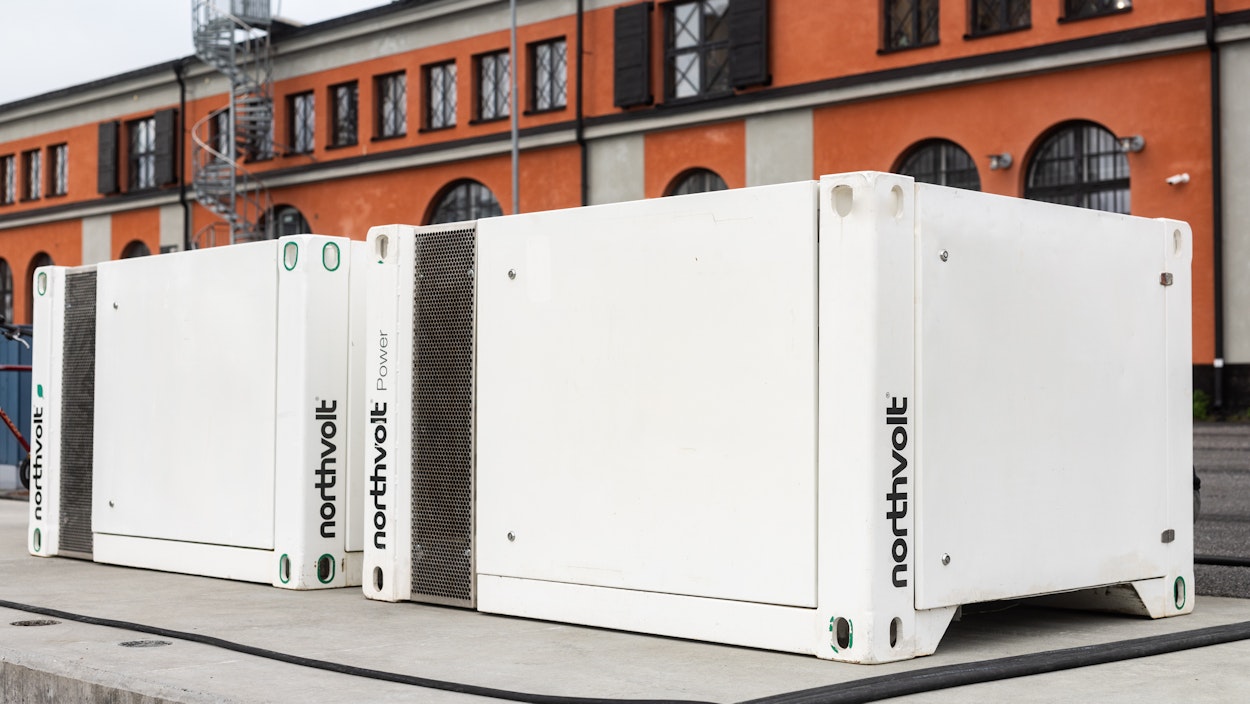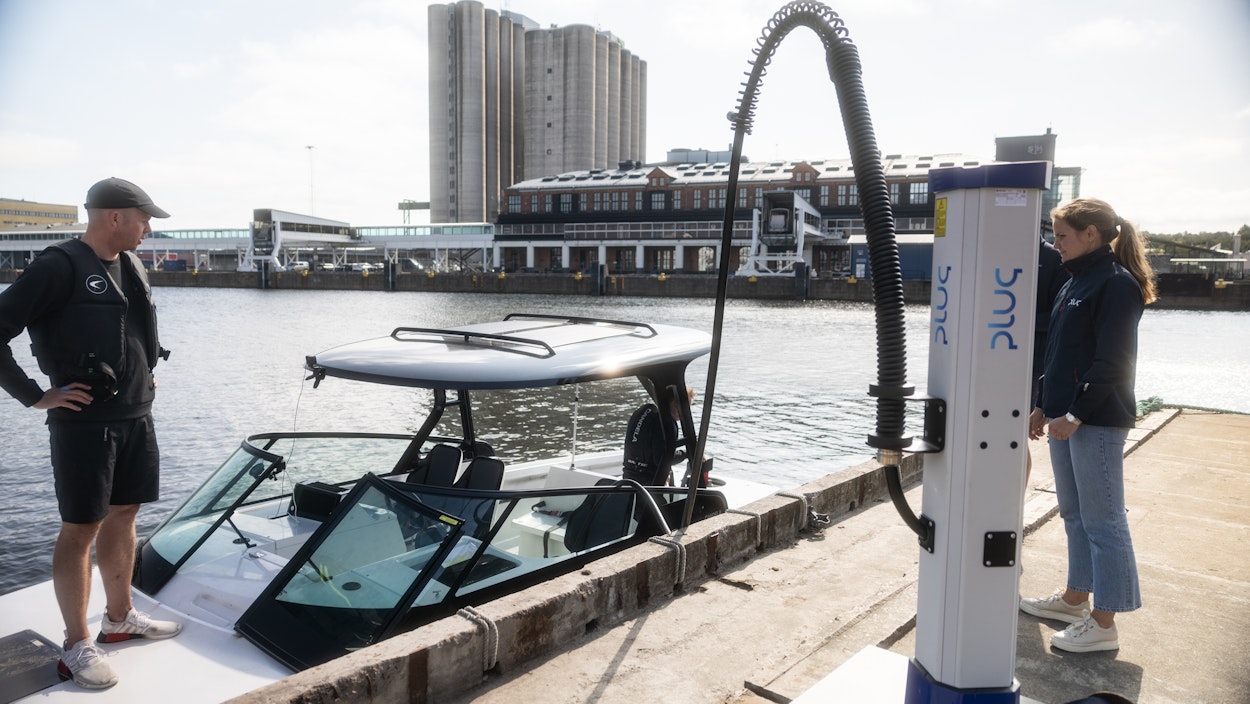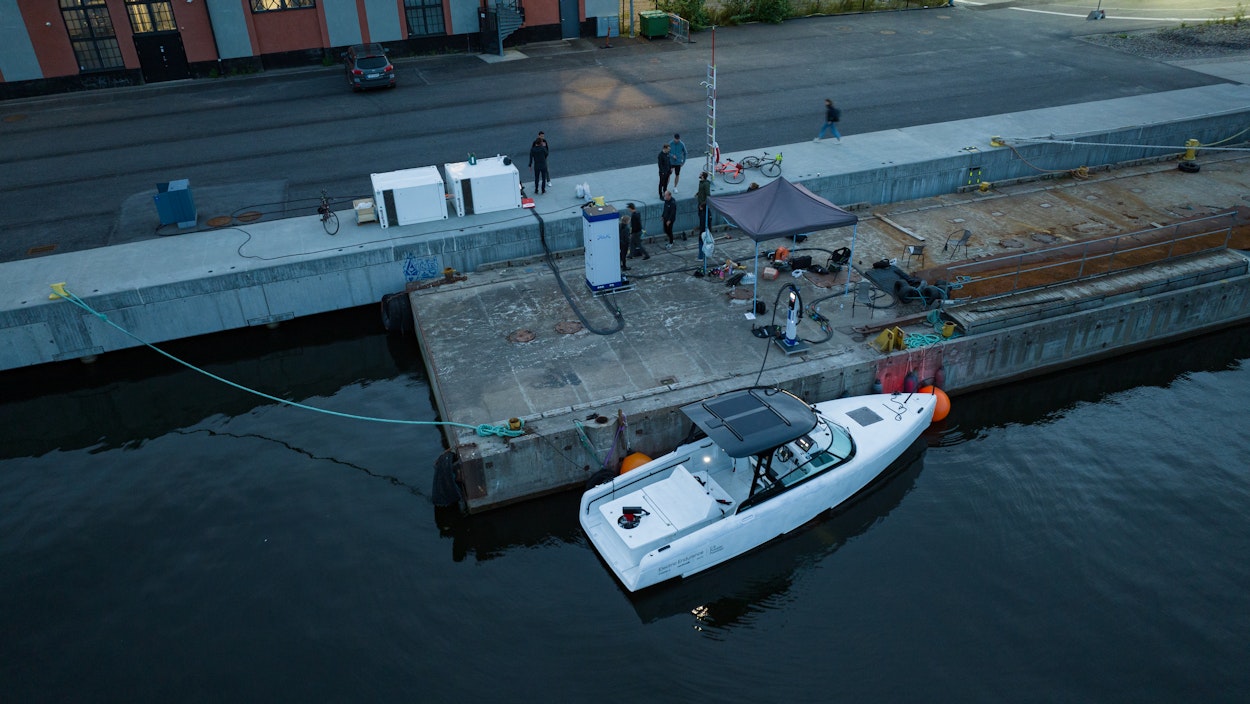Uncharted waters: Candela's electric C-8 sets world record
21 September, 2023
In setting the world record for distance travelled by an electric boat in 24 hours, Candela proves that electric maritime transportation is not an aspiration for the distant future – it’s already feasible, today. Enabled by Northvolt’s own Voltpack Mobile System, the exceptional feat is only the beginning of what electric boating can accomplish.
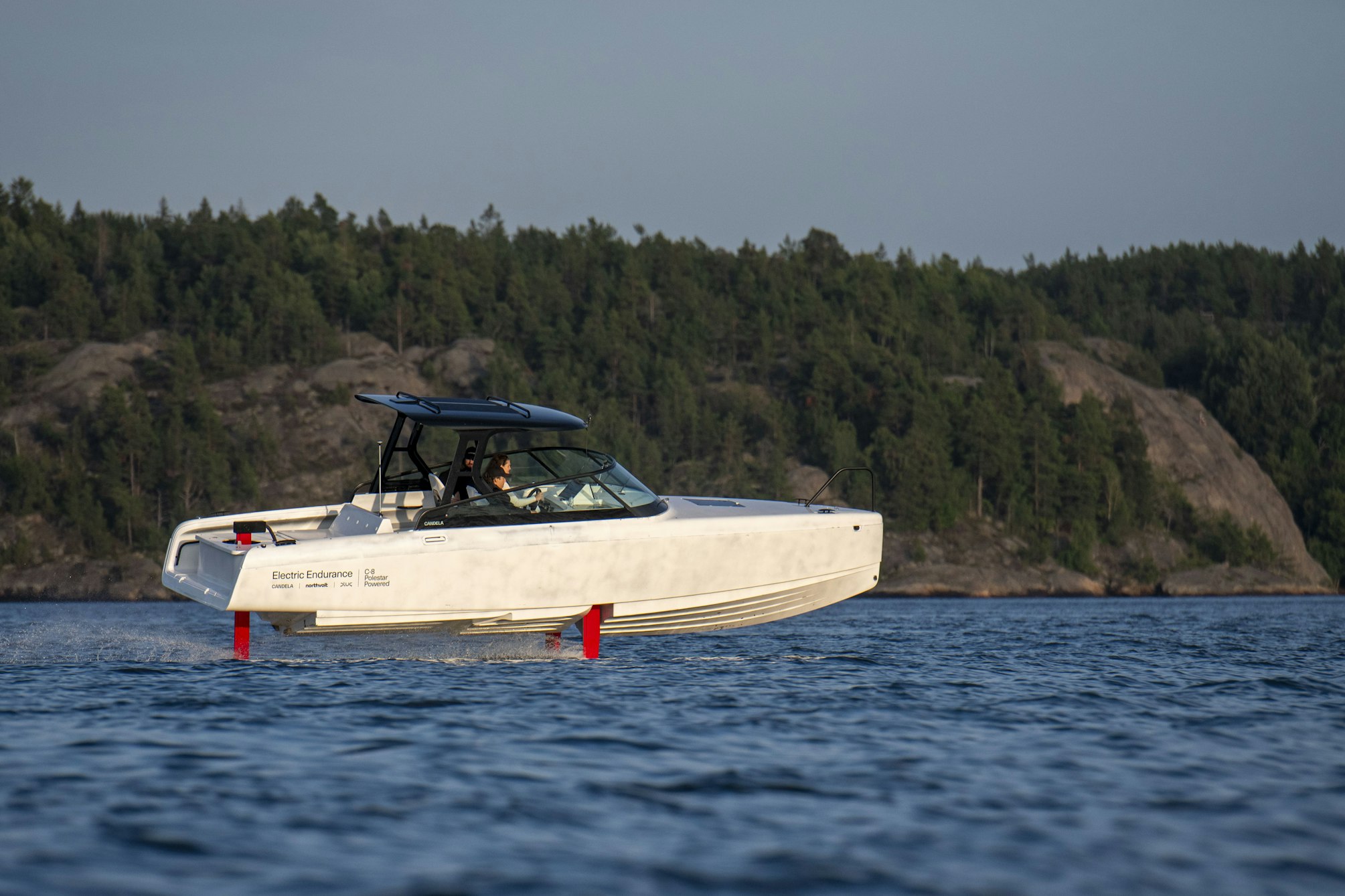
It’s a crisp August morning when we arrive at the Frihamnen port in Stockholm. We’re greeted by a simple set-up: a Voltpack Mobile battery system, a maritime fast-charger and a boat. Of course, this isn’t just any boat. The sleek, fully electric Candela C-8 uses cutting-edge hydrofoil technology, making it lift above the water – reducing drag and energy consumption.
The record attempt
At 8:00 am, the Candela C-8 takes off on the first lap of her 24-hour journey. The boat will travel from the Stockholm Frihamnen port, to the island of Tynningö, before returning to the port – a distance of roughly 20 nautical miles.
Gustav Hasselskog, founder & CEO of Candela outlines the plan for us: “Today we're doing a 24-hour race in the Stockholm archipelago. We intend to push the boat to its limits, going the greatest distance possible, with a target of 400 nautical miles. Our goal is to prove that long-range electric boating is possible, here and now."
And if any boat could break this record, it’s the Candela C-8. Polestar-powered and lightweight, the C-8's unique hydrofoil technology reduces energy consumption by 80%, ensuring both range and speed. With the ability to travel 57 nautical miles fully charged, the Candela C-8 has the biggest range of any electric boat on the market.
"Our goal is to prove that long-range electric boating is possible, here and now."
The charging set-up
Supporting the record attempt, Candela uses a combination of Northvolt’s Voltpack Mobile System and a maritime fast charger by Plug, with a precise charging schedule.
Candela electronics engineer Thomas Larsson tells us: “Our strategy is to charge for about 20 minutes, so that the C-8 is about 80% charged, and then drive for 45 minutes; thereby optimizing both charging and driving time. If we keep repeating that cycle for the next 24 hours, we should easily achieve our target.”
While the fast-charger allows for a full charge in less than 30 minutes, the Voltpack Mobile System ensures the availability of sufficient power despite being on a small grid connection. At Frihamnen, the grid connection was only able to supply 30kW, so the Voltpack acted as a buffer, essentially multiplying the energy available by a factor of four, supplying the fast-charger with the 120Kw necessary, over a 24-hour period.
As the boat returns from its first lap, it becomes clear just how simple this solution is. The charger, which is connected to the Voltpack Mobile, is plugged in, and just a couple minutes later, the C-8 is off again, hovering above the water through its hydrofoil technology.
"The Voltpack opens up entirely new possibilities for electric boating"
Explaining why Candela decided to use the Voltpack Mobile, Gustav states: “I think the Voltpack is a great solution. To make fast-charging available everywhere, we need massive infrastructure investments. With a mobile battery system like the Voltpack, fast charging becomes available now. If we were to place these battery packs throughout the Stockholm archipelago, it would open up entirely new possibilities for electric boating. It would make it possible to travel by electric boat from Stockholm to the Aaland islands, or even to Helsinki.”
The future of waterborne transport
A few hours into the endeavor, we were given the chance to join the Candela team aboard the C-8 on one of her laps. As the boat accelerates away from the port, you can feel the hull gently leave the water’s surface – almost like taking off in a plane. Except in this case, there’s no turbulence. The hydrofoils, which keep the C-8 afloat, slice through any waves left in the wake of bigger ships, avoiding any harsh impact. Most impressive? The lack of noise.
On our return to Frihamnen, we get to talking about what the future holds for Candela. Gustav shares that the next step for the company is the launch of the P-12 shuttle: an electric ferry capable of carrying 30 passengers, set to usher in a new era of public electric transport by water.
“The fast-charging aspect is a key part of bringing electric ferries to life. Right now, we have one hour of charging for every 2.5 hours of travel. To do that, the infrastructure we are using today is essential.”
Mikael Mahlberg, Head of PR & Communications at Candela tells us: “The key ingredients for making electric waterborne transport more mainstream are right here. We have the hydrofoil technology. We have DC charging. We have mobile charging stations that we can deploy in different areas. This jigsaw puzzle is coming together. Now we just have to scale it.”
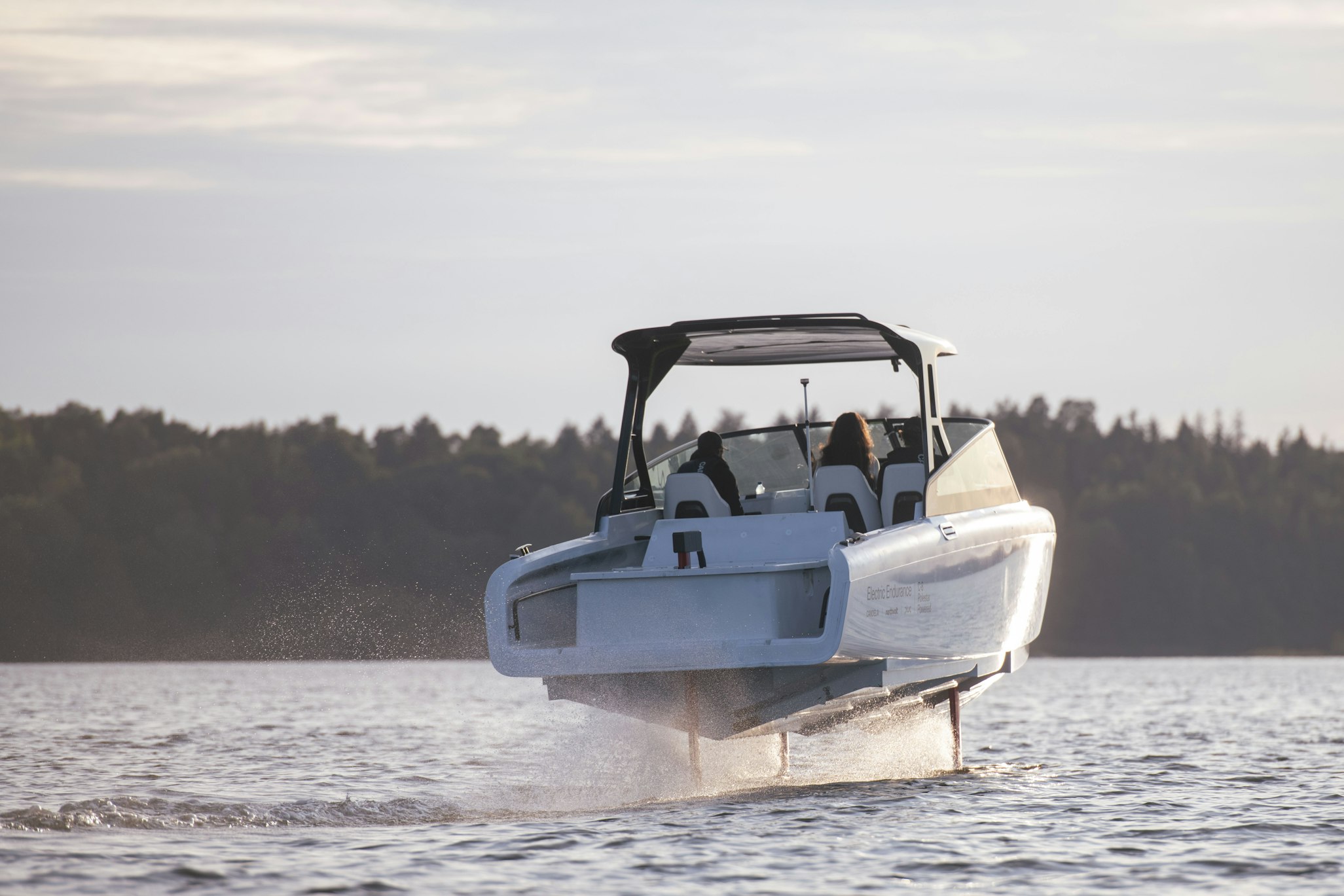
"This jigsaw puzzle is coming together. Now we just have to scale it"
A new world record
At 8 am the next morning, the C-8 completed her final lap. Having travelled throughout the night non-stop, she clocked in at 420 nautical miles, or 777 km, beating both the existing world record, and Candela's target. Witnessing this accomplishment makes it clear that electric maritime travel is not just imaginable, it’s viable, even under extreme circumstances.
In addition, according to the standard Swedish electricity mix, the C-8 emitted 17,4 kg of CO2 over the course of her journey. In comparison, a conventional fossil-fuel boat travelling the same distance would have had a carbon footprint of 1,785kg CO2 – meaning that the C-8 emitted 99% less.
When asked to comment on their incredible feat, Gustav told us: “Today, we've demonstrated just how easy it is to unlock the potential of electric maritime transportation. The technology is right here. We just have to decide to do it. Once we do, we can revolutionize coastal travel.”
